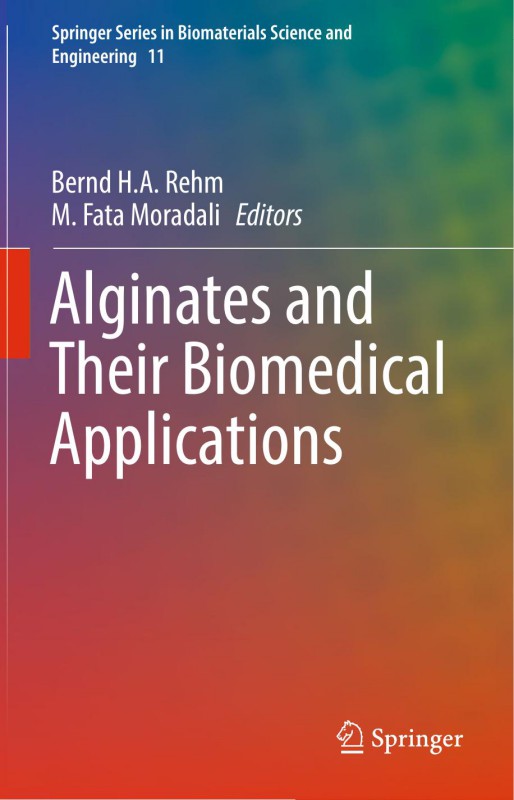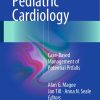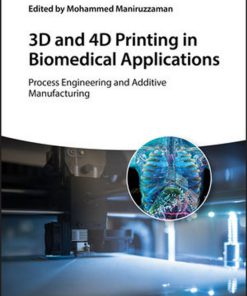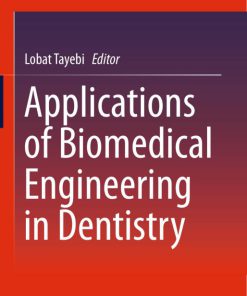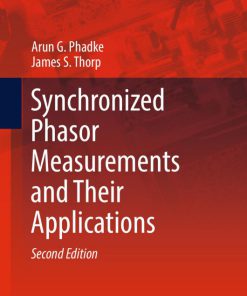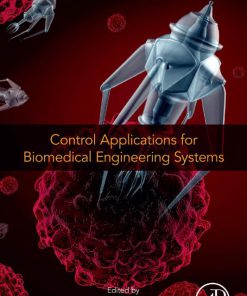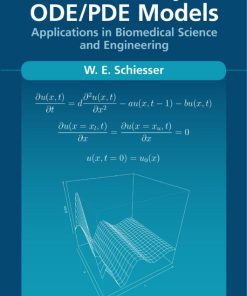(Ebook PDF) Alginates and Their Biomedical Applications 1st edition by Bernd Rehm 9811069107 9789811069109 full chapters
$50.00 Original price was: $50.00.$25.00Current price is: $25.00.
Authors:Bernd H.A. Rehm, M. Fata Moradali, (eds.) , Series:Biomedical [79] , Author sort:Bernd H.A. Rehm, M. Fata Moradali, (eds.) , Languages:Languages:eng , Published:Published:Nov 2017 , Publisher:Springer
Alginates & Their Biomedical Applications 1st edition by Bernd H.A. Rehm – Ebook PDF Instant Download/DeliveryISBN: 9811069107, 9789811069109
Full download Alginates & Their Biomedical Applications 1st edition after payment.
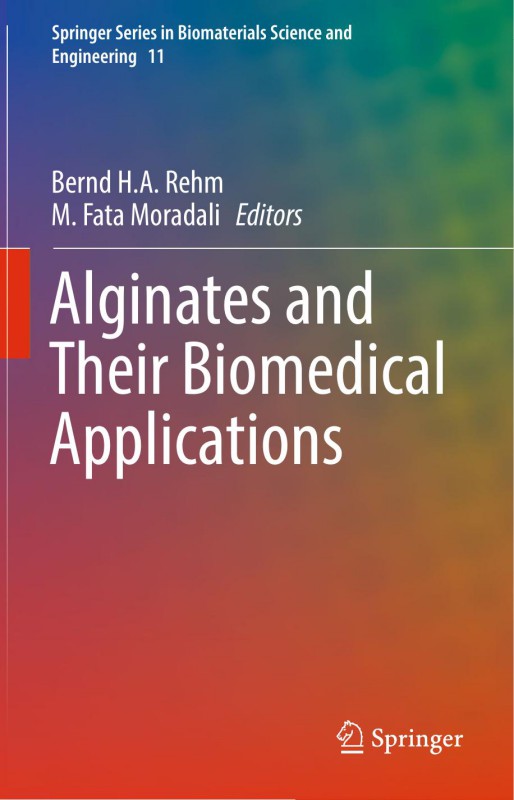
Product details:
ISBN-10 : 9811069107
ISBN-13 : 9789811069109
Author : Bernd H.A. Rehm
This book presents a comprehensive review of the latest advances in developing alginate-based biomaterials and derivatives as well as their biomedical and pharmaceutical applications. It covers the physiochemical properties of alginates, production and formulation methods, derivatizations and characterization methods, the fundamental work on optimizing alginate polymers for defined biomedical purposes as well as the scope and effectiveness of their applications in medicine and therapeutic approaches. The book brings together new concepts and advances in harnessing alginate-based biomaterials in combination with applied technological advances to tailor their applications to medical needs. The contributions by leading academics, clinicians and researchers not only cover the fundamentals, but also open new avenues for meeting future challenges in research and clinical applications.
Alginates & Their Biomedical Applications 1st Table of contents:
Chapter 1: Alginate Biosynthesis and Biotechnological Production
1.1 An Overview of Alginate Discovery and Application
1.2 Alginate Properties and Natural Occurrence
1.2.1 Alginate Structure and Physiochemical Properties
1.2.2 Algal Alginates
1.2.3 Bacterial Alginates
1.3 Alginate Biosynthesis, Modification, and Secretion
1.3.1 Biosynthesis of the Alginate Precursor
1.3.2 Protein-Protein Interactions Constituting Alginate Biosynthesis/Modification/Secretion Multi-p
1.3.3 Alginate Polymerization and Mechanism of Activation
1.3.4 Epimerization
1.3.5 Alginate Acetylation
1.3.6 Alginate Lyases
1.3.7 Alginate Secretion
1.4 Alginate Polymerizing and Modifying Enzymes and Their Uses for Tailor-Made Alginate Productio
1.5 Conclusion and Future Trends
References
Chapter 2: Alginate Production from Marine Macroalgae, with Emphasis on Kelp Farming
2.1 Introduction
2.2 Alginate Production from Marine Macroalgae
2.2.1 Seaweeds Used as Alginate Sources
2.2.2 Alginate Extraction from Seaweeds
2.2.3 Alginophyte Resources Worldwide
2.3 Cultivation of Saccharina and Other Kelp Species
2.3.1 Key Biological Aspects
2.3.2 Background of Kelp Farming
2.3.3 Cultivation Steps and Methods
2.3.3.1 Laboratory-Culture Stage
2.3.3.2 Sea-Culture Stage
2.4 Conclusions and Perspectives
References
Chapter 3: Alginate Microcapsules for Drug Delivery
3.1 Introduction
3.2 Cell Microencapsulation Technology
3.3 Alginate Microcapsules as Platform for Controlled Drug Delivery
3.3.1 Advantages Alginates Offer in Cell Encapsulation
3.3.1.1 A Natural and Biocompatible Polymer
3.3.1.2 Rapid Hydrogel Formation and Scalability
3.3.2 Therapeutic Factors Delivered Through Cell Encapsulation
3.3.2.1 Hormones
3.3.2.2 Neurotrophic Factors
3.3.2.3 Antitumor Factors
3.4 Clinical Trials
3.4.1 Diabetes
3.4.2 Intracerebral Hemorrhage (ICH)
3.4.3 Neurological Diseases
3.5 Complementary Strategies
3.5.1 Matrix Biofunctionalization
3.5.2 Reducing Inflammation
3.5.3 Enhancing Biosafety
3.5.4 Improving Administration and Extraction
3.6 Concluding Remarks
References
Chapter 4: Alginate Processing Routes to Fabricate Bioinspired Platforms for Tissue Engineering an
4.1 Introduction
4.2 Scaffolds for Tissue Engineering
4.2.1 Phase Separation
4.2.2 Atomization
4.3 Design of Carriers for Drug Delivery
4.3.1 Emulsion
4.3.2 Layer by Layer
4.4 Applications in Regenerative Medicine and Industrial Pharmacology
4.5 Conclusions and Future Trends
References
Chapter 5: Alginate Utilization in Tissue Engineering and Cell Therapy
5.1 Alginate: A Promising Biomaterial
5.2 Alginate in Tissue Engineering: Opportunities and Limitations
5.3 Tissue Engineering Constructs and Their Applications
5.3.1 Porous Scaffolds
5.3.1.1 Bone Tissue Engineering
5.3.1.2 Cartilage Tissue Engineering
5.3.1.3 Soft Tissue Engineering
5.3.2 Bioprinted Scaffolds
5.3.2.1 Bone Tissue Engineering
5.3.2.2 Cartilage Tissue Engineering
5.3.3 Microspheres
5.3.3.1 Bone Tissue Engineering
5.3.3.2 Cartilage Tissue Engineering
5.3.3.3 Soft Tissue Engineering
5.4 Conclusions
References
Chapter 6: Alginate-Based Three-Dimensional In Vitro Tumor Models: A Better Alternative to Curren
6.1 Introduction to 3D Cell Culture Models and Problems Associated with 2D Monolayer Models
6.2 Problem with In Vitro and In Vivo Correlation Based on 2D Cell Culture Models
6.3 Introduction to AlgiMatrix™ Based 3D Cell Culture Models
6.4 Alginate Scaffold as a Matrix for 3D Cell Culture-Based Tumor Model
6.4.1 Alginate-Based Scaffolds for Anticancer Drug Screening
6.4.2 Alginate-Based Scaffolds for Studying Cancer Stem Cell (CSC) Biology
6.5 Advantages of Alginate-Based 3D Models Compared to Other 3D Models
6.6 Future Perspectives
6.7 Summary
References
Chapter 7: Alginate Application for Heart and Cardiovascular Diseases
7.1 Introduction
7.2 Alginate in Treating Myocardial Infarction
7.2.1 Myocardial Infarction: Inflammation, Wound Healing, and Remodeling of the Left Ventricle
7.2.2 Injectable Alginate Hydrogel for Replacing Damaged ECM
7.2.2.1 Alginate Hydrogel for Treating MI and Congestive Heart Failure Patients
7.2.2.2 Intracoronary Injection of Calcium Cross-Linked Alginate Hydrogel in Treatment of Acute M
7.2.3 Alginate Hydrogel as a Vehicle for Cell Delivery into Infarcted Tissue
7.2.4 Alginate Hydrogel as Vehicle for Delivery of Growth Factors into Infarcted Tissue
7.3 Application of Alginate in Other Cardiovascular Diseases
7.3.1 Three-Dimensional (3D) Printed Aortic Valve and Its Potential Application in Aortic Valve Di
7.3.2 Fabrication of Bioengineered Blood Vessels Using Alginate-Based Methods
7.3.3 Alginate-Based Drug Delivery Systems in Cardiovascular Diseases
7.3.4 Alginate-Based Stem Cell Delivery in Reverting Doxorubicin-Related Cardiomyopathy
7.3.5 Alginate’s Direct Antihypertensive Function
7.4 Conclusions and Future Prospectives
References
Chapter 8: Alginates in Dressings and Wound Management
8.1 Introduction
8.2 How Do Wounds Heal?
8.3 Background to Wound Dressings
8.4 What Is the Ideal Wound Dressing?
8.5 Alginate Dressings in Wound Healing
8.6 How Do Alginate Dressings Work?
8.7 Indications and Contraindications for Alginate Dressing Use
8.8 Do Alginate Dressings Work in Clinical Practice?
8.9 Conclusions
References
Chapter 9: Alginates in Metabolic Syndrome
9.1 Introduction
9.2 Alginates in the Gastrointestinal Tract
9.3 Alginates in Metabolic Changes
9.4 Alginates in Hypertension
9.5 Alginates in Gastric Reflux Disease
9.6 Alginates in Liver Disease
9.7 Alginates in Inflammation
9.8 Alginates as Drug Carriers for Treatment of Metabolic Syndrome
9.9 Alginates in Cell Transplantation
References
Chapter 10: Alginate Oligomers and Their Use as Active Pharmaceutical Drugs
10.1 Alginate Oligomers: Composition, Structure and Production
10.1.1 Composition and Structure
10.1.2 Production
10.2 Alginate Oligomer Properties
10.2.1 Chemical and Physical Properties
10.2.2 Biocompatibility
10.3 Biological Effects of Alginate Oligomers
10.3.1 Mucin, Mucus and Cystic Fibrosis
10.3.2 Infection Control and Antibiotic Resistance
10.3.3 Infection Control and Biofilms
10.3.4 Medical Device Coatings
10.3.5 Anticoagulation
10.4 Conclusions
References
Chapter 11: Mannuronic Acid as an Anti-inflammatory Drug
11.1 Introduction
11.2 D-Mannuronic Acid (M2000): Anti-inflammatory Properties
11.3 Conclusion
People also search for Alginates & Their Biomedical Applications 1st:
alginates and their biomedical applications
alginate properties and biomedical applications
polymers in biomedical applications
alginate biomaterial
alginate uses in medicine

